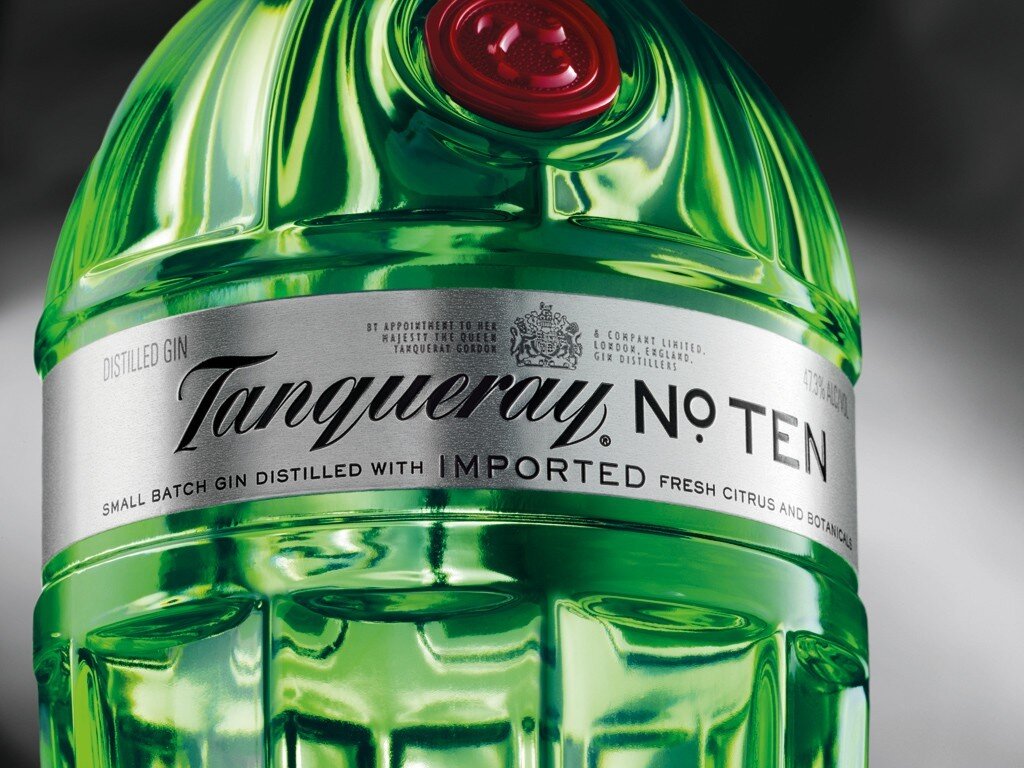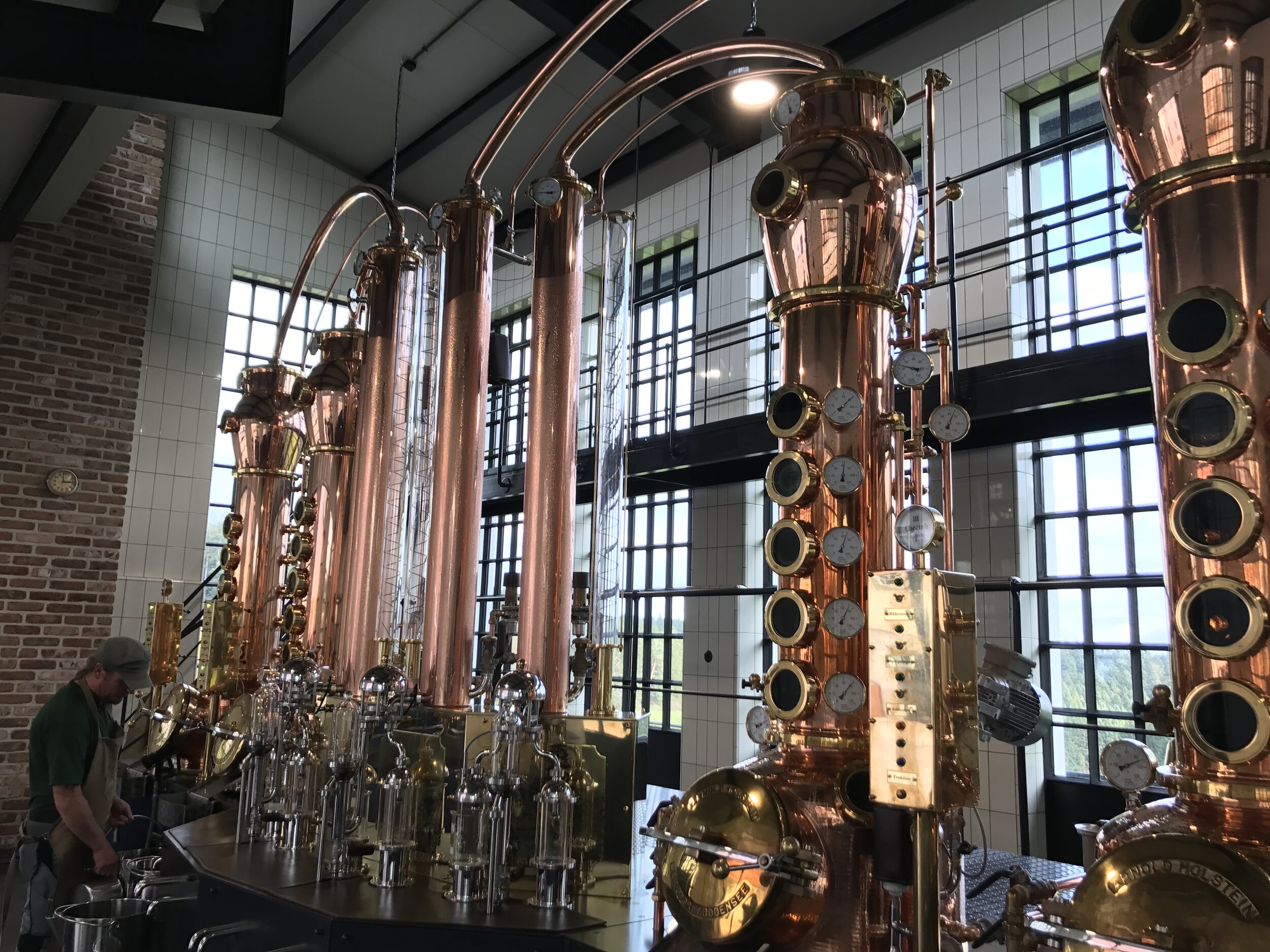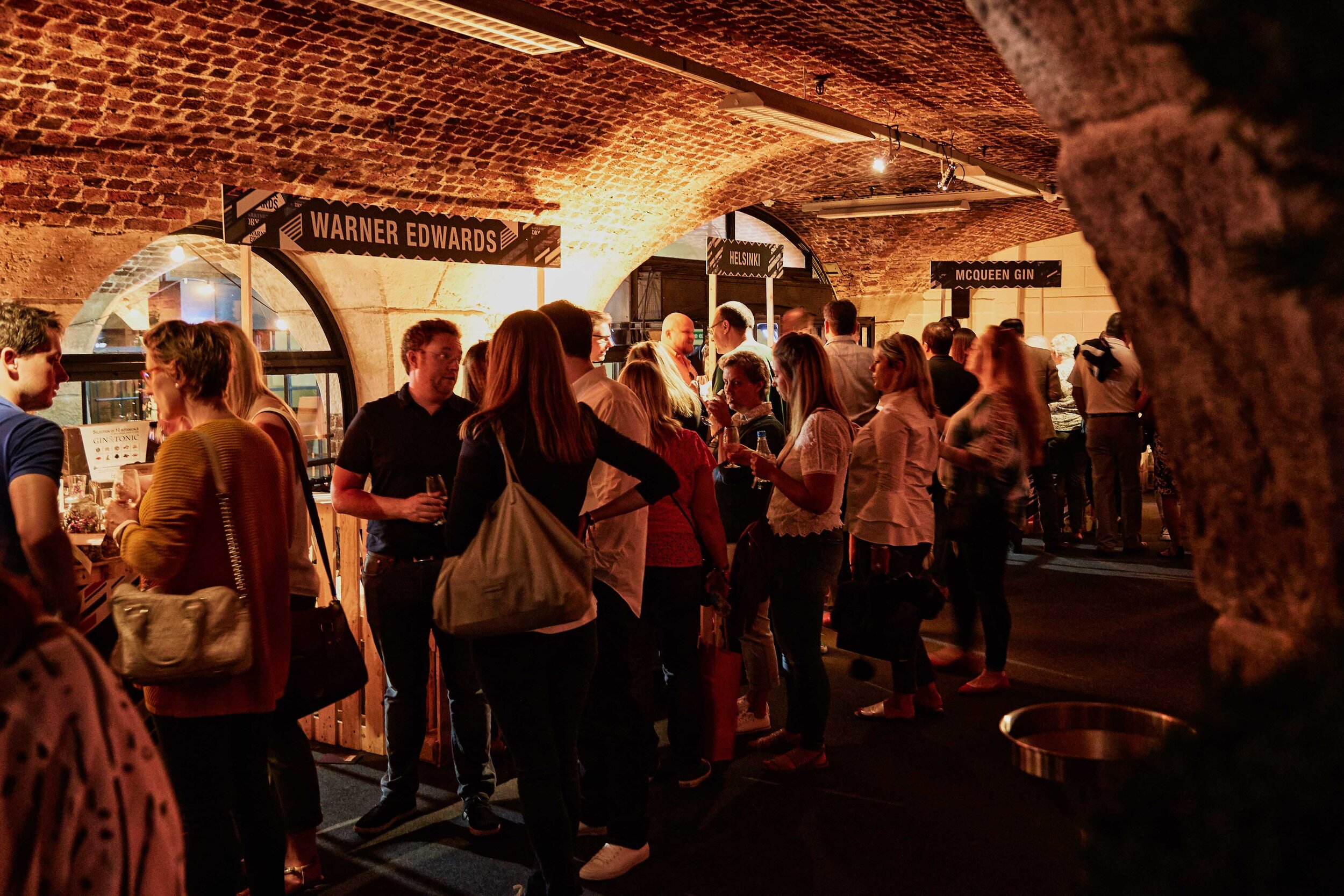
Roll Call of Sanctioned Gins
Rocker’s Gins
Def Leppard: Rocket Gin, Animal Gin
Ghost: Juniper Gin
Helloween: Seven Keys Pumpkin Spiced Gin
In Flames: IKON No13 Gin
Kiss: Cold Gin, Navy Strength Cold Gin
Ozzy Osbourne: Ultimate Gin
According to the Ginventory applet, there are 8,700+ gins in the world today distilled in 87 countries, and almost 700 selections of tonic water.
The Slightly Insane History of Gin
The early history of gin is much more than the sole work of one man or one moment in time, as is often proclaimed in many of today’s bite size media titles. It was the gradual coming together of two forces, juniper and spirit, both of which had many separate adventures before they were united in a glass of genever, let alone gin later. The exact moment at which juniper berries were first used to flavor malt wine is one of history’s great mysteries. For the long version of this part of gin history, please see this posting from the Gin Foundry (UK), as well as this posting from the Jenever Museum (Belgium).
Gin has a tumultuous history, best captured in the 1751 engraving of the Gin Craze era by editorial cartoonist William Hogarth entitled Gin Lane, described by the BBC as "arguably the most potent anti-drug poster ever conceived." Much like the USA’s ‘War on Drugs’ of the late 20th century, the British government tried a number of times to stop the free flow of what came to be called Mother’s Ruin via the Gin Acts of 1736 & 1751 — which is hilarious, since they themselves had created the British gin industry by passing a range of legislation in the late 1600s aimed at restricting French brandy imports and encouraging local gin production. This trend peaked in 1690, with the London Guild of Distillers monopoly (established in 1638) being broken by the British Parliament passing The Distilling Act, 'An Act for encouraging the distilling of brandy and spirits from corn', enabling literally anybody to distil grain spirit. So: gin, ginny gin for everyone! Oh shit, everyone is drinking gin — doh!
Though the English and Dutch are best-known for making gin, it can be produced anywhere (even in Uganda). Gin is a light-bodied distilled spirit that is made of a mash of cereal grains, usually corn, rye, barley, and wheat. Producers cannot qualify their gin by age and, generally until recently, only genever was barrel aged. For that reason, most gin is typically clear. More and more now though, many gins are appearing colored such as with some throaty Old Toms, many fruity variants, and the newfangled barrel-aged gins.
The use of botanicals during distillation sets gin apart from the other liquors, particularly vodka. Gin's dominant flavor and aroma come from juniper berries. Juniper must be included in order for a liquor to be classified as gin, though New Western Dry gins go light on it — sometimes to a fault. The juniper is responsible for that pine-like flavor that makes gin unique. Beyond that, every distiller of gin uses its own botanical recipe, comprised of various herbs, spices, flowers, and fruits. Some gin recipes use just a handful of different botanicals, while others use 30 or more. This lends to each gin's unique flavor profile and, unlike other spirits, every gin you pour can be an entirely new experience.
The strength of gin ranges between 40 percent and 47 percent alcohol by volume (ABV, 80 to 94 proof); the majority is bottled at 80 proof. “Navy strength” gin is the strongest at around 114 proof (backstory).
Ways to make our most blessed elixir, Gin
The five basic methods below, plus any blending of their results, comprise all that you need to know for the ways of making gin. Use one. Use the other. Use one and then the other by running multiple distillation cycles. Use different botanicals on a subsequent cycle. Tanqueray actually does 4 distillation cycles in the making of their gins! There’s even a crazy new variation being hotly debated: each botanical is macerated separately and then the numerous resulting single-botanical distillates are blended together to make the finished gin. Whaaaattttt??? Then there's 'Single Shot' versus 'Multi Shot' gin production, as well as... hey, let's stop here already and just read on.
Steeping (no distillation)
This is only an acceptable method of making gin in a survival situation, with access to alcohol and botanicals but no still. When botanicals are extracted, there is no way to select which flavors are included in the gin. For instance, the harsh, turpentine flavors in some juniper berries will be extracted.
No quality gin distillery in the world uses this method, though home gin kits do since it’s so bloody easy to do. Bargain-basement gins may be made this way, but what are you, homeless or something? Fuhgeddaboudit!
All this being said, if you’re making Sloe Gin (a liqueur derived from gin — see below), then steeping is your magic method.
2. Maceration
The selected botanicals are prepared for soaking in strong alcohol, left whole or chopped up or even powdered. Botanicals are often not the same all the way through; a seed might have a certain flavor on the outside skin of the seed, but quite a different flavor inside. If you don’t powder the seed, the majority of the extraction will come from the outer layer.
The botanicals are then soaked or “steeped” in the strong alcohol in the still or another container, typically only for 1-2 days.
When steeping is done, the still is heated. The alcohol and compounds extracted from the botanicals will carry over as vapor into a condenser, where they are collected as a liquid.
3. Vapor Infusion
The selected botanicals are placed in some sort of container above or just downstream from the alcohol in the still. The still is heated up, and the alcohol vapor will pass through the botanicals, extracting some flavor before being sent to the condenser to be cooled back into a liquid. The botanicals container can be a special polymer mesh bag which is hung inside the still, not touching the liquid, or it can be a metal container packed with botanicals which is joined to the still boiler by a metal tube (as shown in the picture above).
Vapor infusion results in a different flavor than macerated gin. The interaction temperature is lower, so the botanicals are less “cooked”.
4. Vacuum Distillation
A relatively new variation on the Vapor Infusion process is Vacuum Distillation, resulting in an even lower interaction temperature (nearly ambient). Low-to-no heat is added to the still; instead, a vacuum is created above it to boil off the alcohol relatively cold. Cooling as added to the distiller, to accelerate distillation. This cold vapor infusion process leaves more of the botanical essence intact rather than fully fusing them together, providing a more blatantly multilayered gin.
5. Barrel-Aging
Although done with Genever by the Dutch for centuries now, a relatively new variation for modern gin making is to take the finished distillation product and then barrel-age it for a few months, typically in virgin oak casks. Maison Ferrand’s Citadelle is generally credited with making the first widely released, modern barrel-aged gin in 2008. Citadelle Réserve is aged in five casks, acacia, mulberry, cherry, chestnut and French oak, before being blended together in a unique egg-shaped oak barrel. Hernö Juniper Cask Gin is the first gin in the world aged in juniper wood casks! Some gin makers seek non-virgin casks for their aging, with previous liquids including bourbon, cabernet sauvignon, chardonnay, rioja, shiraz, pinot noir, Irish whiskey, cognac, beer, rum, vermouth, peaty scotch, and even ginger beer. For more on this topic, read this.
6. Post-Gin Flavor Infusion
This is a new and wide category for gins, since there are many ways to do this (steeping, maceration, vacuum distillation, etc.) Gin distillers in Australia and New Zealand have become enamored with blending their more famous red or white wine grapes with gin. Examples include Four Pillars Bloody Shiraz Gin (AUS), Heathcote Shiraz Reserve Gin (AUS), and Dancing Sands Sauvignon Blanc Gin (NZ). These differ from liqueurs in that the minimum gin alcohol content of 75 proof is intentionally maintained in this process, yielding full-strength or even Navy-strength gin. The resulting flavor infusion is a big step further forward than simply barrel-aging the gin in an old wine barrel, resulting in a powerful taste blending versus just adding an accent. But gin flavor infusions are by no means limited to only wines; distillers can infuse whatever taste they think will blend well with the host gin (current-day examples include fruit, chocolate, and even wasabi). And Crater Lake Prohibition Gin does a truly wild one: infusing ONLY wild hand-picked juniper berries from the Bend, Oregon area into a blank base spirit for a single-botanical flavor — and at Navy-strength. Kapow!!

We all know that there are 5 types of Gin:
Genever (Dutch: Jenever; pronounced “yeh-NAY-ver”)
Genever (or Schiedam gin / Hasselt gin) is the original gin, of Dutch and Belgian origin. It’s sometimes referred to as ‘the grandfather of gin’.
Nathan O'Neill, Director of Mixology at Claridge’s in London, describes crafting Genever: “Instead of using a neutral grain spirit, Genever distillers actually create a malt wine spirit, which is the predominant flavor of the gin. The grains are left to ferment for five days or so, and then turned into a mash, similar to how whiskey is made. Then they'll add different botanicals, including juniper, but the difference here between the dry gins and Genever is that juniper is not the predominant flavor. The actual gin is a lot more malty. Flavors added can be cloves, caraway, ginger, nutmeg. So you've got vaguely different style of taste, and you certainly have way more earth notes within it."
Genever is often aged in oak casks for one to three years, and comes in two styles: Oude (old) being the sweet and aromatic original style with a straw color, and Jonge (young) which has a drier palate and lighter body. Genevers are actually geographically protected by law, and can only be distilled legally in the Netherlands, Belgium and a couple counties in France and Germany.
London Dry
London Dry Gin is the best-known and most widely produced style of gin in the world today, owing it’s creation to the invention of the Coffey Still in 1830. London Dry is considered to be the benchmark that defines modern gin today. It is a juniper-forward, very dry gin — “dry” being an unsweetened base spirit so that the taste of the botanicals dominates versus the older “Old Toms”. Its flowery and aromatic characteristics are a result of adding the botanicals during the second or third distillation. The vapors from these flavoring agents reach the alcohol as they pass through a specialized still with an attachment called a gin head. Tanqueray’s trade-secret recipe for their standard London Dry gin fesses up to using juniper, coriander, angelica root, and licorice as just some of their botanicals. London dry gin is often preferred for making martinis, and the most versatile gin for cocktails.
Plymouth
Plymouth Gin is a clear, full-bodied gin that is very aromatic like London Dry but less juniper-forward. It uses a blend of seven botanicals: juniper, coriander seed (adds acidity), dried sweet orange peels, cardamom, Angelica root, and Orris root. This style originated in the port of Plymouth on the English Channel, in 1793. Only one distillery, Plymouth, Coates & Co., has the right to produce it today, so it is actually both a style and a brand name. It’s a good choice for cocktails that favor a fruit-forward leaning (martinis and negronis). One could argue that the explosion of fruit-forward gins in both the London Dry and New Western Dry types is really pulling from the roots of Plymouth Gin fruitiness.
The Plymouth Gin Distillery in Cornwall has been up and running since 1793, and is the oldest working distillery in the UK. The distillery is located in what was once a Dominican Order monastery, built in 1431.
Old Tom
Think of Old Tom Gin as a sweeter predecessor to London dry gin. Simple syrup (added to hide the taste of impurities and poor process controls) distinguishes this older style from its contemporaries and many include notes of citrus. During the Gin Craze days when there were many small producers of bad but cheap gin, sweetener would hide the gin’s awfulness; the term “bathtub gin” became born, and Old Tom was its street name. Old Tom was actually the original gin used for the popular Tom Collins cocktail, and the gin of choice for much of the 19th century. Not too long ago, Old Tom gin could be found almost exclusively in the U.K. Today it's produced by a number of U.S. distilleries as well.
In 2014, Tanqueray did a limited edition run of an Old Tom recipe Charles Tanqueray had concocted in1835. The bottle label was a replica of their Old Tom Gin label, which was discontinued in 1921 because of US Prohibition going into effect a year earlier. Unlike Tanqueray’s Malacca limited edition, their Old Tom reboot wasn’t liked enough to go into production.
A fantastic example of Old Tom deliciousness is Boatyard’s Old Tom Gin, hailing from Enniskillen, Northern Ireland (UK). Everyone we’ve shared it with in a GT is fascinated by it. Tha an deoch blasta!
New Western Dry
New Western Dry Gin (or "New American" Gin) are names adopted by the international bartending community to describe a number of modern gins released in the early 2000s. These brands downplay juniper and were so different from the standard gins that there was much debate as to whether they could be classified as gin. Many were produced with modern cocktails and vodka drinkers in mind.
Aviation American Gin is one of the more well-known gins of this type, promoted by actor & co-owner Ryan Reynolds and made in Portland, Oregon USA. Tanqueray’s corporate parent, Diageo, bought Aviation American Gin for $610M in 2020. Sadly, to this AGTDA connoisseur, Aviation American Gin tastes like mint-flavored mouthwash.
But not all NWD gins are distilled by newcomers. Nolet, the oldest Dutch distiller established in 1691, experimented for 7 years before releasing a wonderful NWD gin in 2010 called “Silver”. It is uniquely fruit-forward and of course juniper-light, but weighing in at Navy strength (95 proof). Smaakt lekker met een slag!
Beware the Ginposters and Ginpersonators!
Gin-based liqueurs (‘compound gins’) are great sweeties, but to make ‘em ya start with gin and up with… not truly gin any more. Oh, and don’t forget the liars and damn liars in this category.
Sloe Gin
Sloe gin is traditionally described as a liqueur made by steeping sloes (the fruit of the blackthorn bush) and sugar into gin, although modern versions are almost always compounded from neutral spirits and flavorings. Each sloe is pricked to aid flavor extraction, traditionally with a thorn taken from the bush on which they grew. Sloe gin is deep ruby-red in color versus gin’s transparency, sweeter, and much lower proof (50 proof versus gin’s 80+ proof).
HRM Queen Elizabeth II (RIP) even has her own Sloe Gin now!
Sloe berries don’t grow in the United States, so if the liqueur is being made in America, it’s usually made from imported sloe berries (which is costly and unlikely), concentrated sloe (lesser quality sloe gins), or alternative, local ingredients similar to sloe berries.
Fruit Cups
Fruit Cups are similar to Sloe Gin, but instead of steeping sloe berries in gin, they steep varied combinations of fruit in gin along with herbs, spices, and botanicals. (Most fruit cups are gin-based, but some are based on other spirits such as vodka.) Fruit cups are typically marketed for the summer months, served with fruit as a cocktail garnish to improve the flavor; recommendations include apple, orange, strawberry, lemon, lime, cucumber, mint, and borage leaves.
Introduced in 1823, Pimm's is a popular brand of gin-based fruit cup. Its most popular product is Pimm's No. 1 Cup, but they’ve offered several fruit cup variations over time.
Interestingly, the favorite tipple of QE II (RIP) uses Dubonnet, which is made identically to how a Fruit Cup is made (steeping in herbs & spices) except that they start with a fortified wine instead of a gin. For the mixed drink, the gin is added to the Dubonnet in the glass.
LGBTQ+
Since 2013, gin has been in a period of ascendancy worldwide. Many new brands and producers have been entering the category leading to a period of strong growth, innovation, and change. More recently gin-based liqueurs have been popularized, reaching a market outside that of traditional gin drinkers, including fruit-flavored and usually colored Pink gin, Rhubarb gin, Spiced gin, Violet gin, Blood orange gin, and even new variations on Sloe gin.
And then there’s just damn liars, boldly cashing in on gin’s popularity with non-compliant gin.
Between all this stuff as well as the recent addition of gin’s “New Western Dry” category, it’s getting pretty damn hard to classify gins.
For the litigious amongst us
All well and good, Sir, but what exactly is the legal definition of Gin today?
Gin Applets for Smartphones
Ginventory helps G&T fans find their “perfect serve” with an online database featuring 5,000+ gins, 500+ tonics, and 200+ garnishes. The app is compatible with both Apple and Android smartphones, and works by specifying a particular gin or tonic water to yield appropriate pairings for the best GTs, including the right garnish options.
Founder, Bjorn Blockx, said: “Gin is in. I’m a gin enthusiast myself, and for years I’ve been searching for the best gin and tonic recipes. All that data has now been merged into one app, so everyone can enjoy the perfect G&T.
“Just search for a gin, and we’ll tell you what tonic and garnish matches best.”
The app was created based on recommendations of hundreds of distilleries, gin bars and retail stores.

Gin Tradeshows, Conferences, and Symposia
Ginposium
The Leading Gin industry event where some of the world’s most respected personalities and experts from the drinks and gin trade come together to discuss the state of the gin industry and share their knowledge and expertise on all things gin at this Gin Guild organised event.
(England, UK)
GinWorld
The concept of Ginworld grew out of a grass roots gin festival born in the Midwest gathering distillers from around the country together to share their passion, their spirits and their experiences directly with the consumers and industry that support them. Now in our sixth year, Ginworld has evolved into a platform to expand the knowledge of gin, celebrate its ever growing spectrum and elevate the category of gin around the world.
(New York City / Washington DC / St. Louis MO, USA)
Gin Publications
Published four times a year, Gin Magazine is the perfect tonic to your tipple. Every issue brings you fascinating articles on the art, science and romance of gin, plus page after page of tasting notes.
Gin Magazine is distributed worldwide and can be found in many bookstores, newsagents and other retail outlets.

Gin Festivals
Globally there are a huge number of gin festivals that have popped up from the recent resurgence in craft gin popularity. We list just some of them here, recognizing that many come and go — sometimes ending spectacularly (link). And lest we forget the recent global pandemic, which obliterated many of the smaller ones of these.
England, UK
Junipalooza ; The Gin To My Tonic Festivals (many) ; Beverley Gin Festival ; Hull Gin Festival ; Gin and Rum Festival (many)
Japan
Netherlands
Scotland, UK
Estonia
Belgium
Thailand
Australia
New Zealand
"Gincredible" - The Bay of Plenty Gin Festival ; East Imperial Gin Jubilee (see “Asia & Oceana”)
Denmark
Vietnam
Malta
South Africa
SA Gin Festival (many)
Asia & Oceana
East Imperial Gin Jubilee (Beijing, Shanghai, Shenzhen, Hong Kong, Singapore, Kuala Lampur, Auckland)

Ginny Days
US Gin and Tonic Day
Celebrated every April 9th.
World Gin Day
Celebrated every second Saturday in June.
International Gin and Tonic Day
Celebrated every October 19th.













